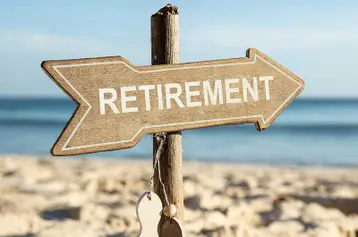
Table of contents
- 1.What is SECURE 2.0 Act?
- 2.Who does it impact?
- 3.Key Provisions
- 4.How can TriNet help?
What is SECURE 2.0 Act?
The Setting Every Community Up for Retirement Enhancement (SECURE) Act enacted in 2019 sought to make saving for retirement easier for both employers and employees. On December 29, 2022, Congress expanded on the original with the SECURE 2.0 Act, adding new provisions and incentives.
Who does it impact?
The SECURE 2.0 Act contains over 90 provisions that affect the retirement landscape, which impact employees and employers across defined contribution and benefit plans. This includes, but is not limited to, 401(k), 403(b), IRAs, and pension plans. There are provisions that affect how much savers can contribute and the tax deduction of these contributions. It is important to note that some of the new provisions may take some time to be worked out by the affected regulatory agencies.
Key Provisions
Some of the provisions within the SECURE 2.0 Act are required, while others are optional. Here are a few of key provisions that amend the Employee Retirement Income Security Act (ERISA) and the Internal Revenue Code.
• Retirement Plan Startup Costs Tax Credit
Retroactive to 2020, employers with 50 or fewer employees that adopted a new retirement plan may qualify for a tax credit for up to three years equal to 100% of the administrative cost of establishing the plan.
An additional tax credit based on contributions made by small employers to a newly established plan will be a percentage of the amount contributed by the employer up to a per-employee cap of $1,000 (but contributions to employees with compensation in excess of $100,000, as indexed, are not taken into account). The full amount of the new tax credit would be available to employers with 50 or fewer employees but phases out over five years for employers with 51 to 100 employees.
• Catch-Up Contribution Increases
Employees aged 50 plus are currently eligible to make additional "catch-up" contributions. Effective January 1, 2025, catch-up contributions for participants in a 401(k), 403(b), government 457(b), or Salary Reduction Simplified Employee Pension (SARSEP) plan will be increased to the greater of $10,000 or 150% of the regular age 50 catch-up contribution amount, for employees who reach ages 60-63 during the year. For participants aged 60-63 in a Simple IRA or 401(k) plan, this contribution limit will increase to the greater of $5,000 or 150% of the regular age 50 catch-up contribution limit for Simple IRA or 401(k) plans.
• Classifying Catch-Up Contributions as Roth for Certain High Wage Earners
A qualified plan that permits employees to make catch-up contributions must be classified as Roth for employees who earned over $145,000 subject to FICA in the prior calendar year. The IRS recently announced a two-year transition period for this provision, and will now take effect on January 1, 2026.
• Increased Coverage for Long-Service Part-Time Employees
SECURE 1.0 Act required employees who had at least 500 hours of service in each of three consecutive years be permitted to make elective deferrals to an employer's 401(k) plan (but with no requirement for an employer to provide matching or other employer contributions). Effective after December 31, 2024, SECURE 2.0 shortens this eligibility requirement and employees who have at least 500 hours of service in each of two years must be permitted to make elective deferrals.
• Required Automatic Enrollment and Automatic Escalations for New Plans
Any 401(k) established after December 23, 2022, for plan years beginning in 2025, must automatically enroll employees and require deferrals of at least 3% but not more than 10%. These also include a 1% annual automatic provision that escalates participants’ deferral percentage until the deferral rate is at least 10%, but no more than 15%. Employees may opt out of either the automatic enrollment or automatic escalation. Employers that join an existing Multiple Employer Plan (MEP) are subject to these requirements as if they had established a new plan.
• Required Minimum Distribution (RMD) Age Increase
Generally, RMDs must begin within the calendar year in which an individual reaches age 72. The provision increases the age triggering the required beginning date from age 72 to age 75 in two phases: age 73 – for individuals who reach 72 after 2022, and age 73 before 2033; and age 75 – for individuals who reach 74 after 2032.
• Employer Match Treated as a Roth Contribution
Effective for existing plans as of December 29, 2022, a 401(a) plan, 403(b) plan, or governmental 457(b) plan may permit an employee to designate employer matching or nonelective contributions as designated Roth contributions. If the employee elects to treat employer contributions as Roth, the employee would be taxed on the contribution. This option is available only for employer contributions that are vested.
• Emergency Distributions
Effective with distributions made after December 31, 2023, employers could provide a distribution option allowing participants to take withdrawals from qualified retirement plans as emergency personal expenses. An eligible participant may only make one qualified emergency distribution per year of up to $1,000 and has the option to repay the distribution within three years.
• Distributions for Domestic Abuse Victims
Effective with distributions made after December 31, 2023, employers can create a new type of penalty-free distribution for participants who need the funds in cases of domestic abuse. Withdrawals can be made up to $10,000 or half of the eligible participant’s vested account balance, whichever is smaller.
• Student Loan Payments
Under the current law an employer contribution that is applicable to student loan payments is a “nonelective” contribution that is vested separately from the matching contributions. An optional provision for employers to implement after December 31, 2023, will allow employers to make matching contributions under a 401(k) plan, 403(b) plan, governmental 457(b) plan, or Simple IRA with respect to “qualified student loan payments.”
How can TriNet help?
TriNet clients may adopt a TriNet 401(k) plan. By doing so, TriNet clients can offer a retirement plan to their employees to help them boost their retirement savings. The TriNet 401(k) plan is also a great solution to comply with SECURE 2.0 Act. Below are some other reasons to consider adopting a TriNet 401(k) plan:
- Help with administrative tasks.
- No out-of-pocket costs to your company for plan set-up or administration; fees are paid out of participant accounts.
- 401(k) plan fees are generally much lower than industry average.
- Assumes much of the fiduciary responsibility.
- Diversified investment solutions.
- Attractive benefits to help recruit and retain top talent.
- Ability to add company contributions.
Learn how TriNet’s comprehensive HR solutions can help your business today.
© 2023 TriNet Group, Inc. All rights reserved. This communication is for informational purposes only, is not legal, tax or accounting advice, and is not an offer to sell, buy or procure insurance. TriNet is the single-employer sponsor of all its benefit plans, which does not include voluntary benefits that are not ERISA-covered group health insurance plans and enrollment is voluntary. Official plan documents always control and TriNet reserves the right to amend the benefit plans or change the offerings and deadlines.
This post may contain hyperlinks to websites operated by parties other than TriNet. Such hyperlinks are provided for reference only. TriNet does not control such web sites and is not responsible for their content. Inclusion of such hyperlinks on TriNet.com does not necessarily imply any endorsement of the material on such websites or association with their operators.

Melissa Pavsner
Table of contents
- 1.What is SECURE 2.0 Act?
- 2.Who does it impact?
- 3.Key Provisions
- 4.How can TriNet help?





